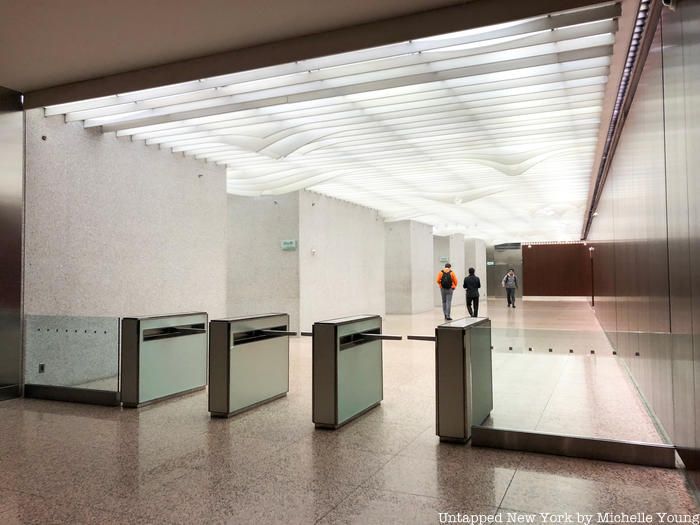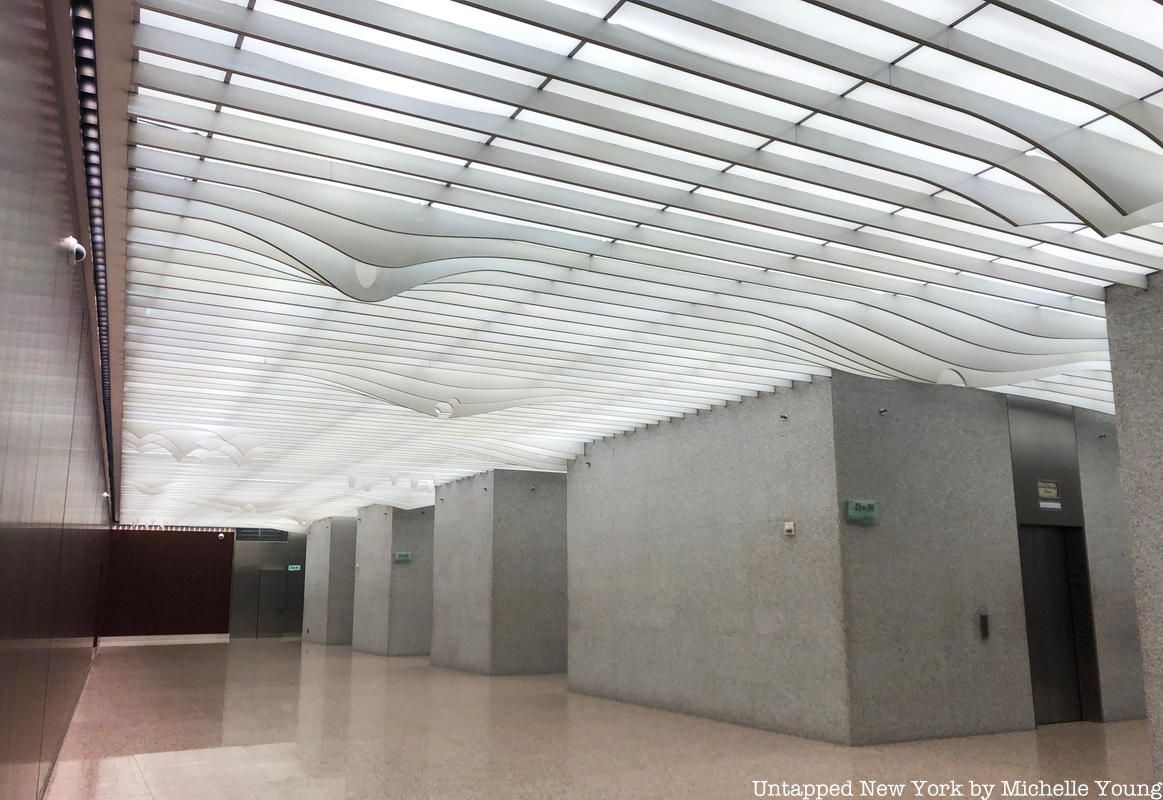Exploring New York’s Industrial Past in "Cathedrals of Industry"
Join photographer Michael L. Horowitz for a journey through 50 years of photographs!


Apart from what is on display in the Noguchi Museum in Long Island City, there are only five other works by Isamu Noguchi that can be visited by the public in New York City. Now, the New York Times reports, one of those pieces is under threat. Known by Noguchi himself as “a landscape of clouds,” the undulating canopy and walls of this site-specific work at 666 Fifth Avenue create a corporate lobby quite unlike any other in the city. But this Midtown skyscraper, which managed to survive both financial and political upheaval in the last decade, may now undergo a full demolition of its lobby.

666 Fifth Avenue was purchased by the Kushner Companies in 2007 for a whopping $1.8 billion, in a purchase led by Jared Kushner and achieved predominantly through debt. It is said that Kushner hoped this purchase would move his family’s company into the big leagues of Manhattan real estate, especially after the conviction and jail sentence of his father on tax evasion and other charges. However, the Kushner Companies weathered annual losses of tens of millions and struggled to find investors for the property, finally selling it to Brookfield Properties in August 2018 for less than $500 million of the purchase price in 2007.

The building also made it into the current events of our times, when Paul Manafort, Rick Gates, and the Russian-Ukrainian political consultant Konstantin Kilimnik met in the Grand Havana Room at 666 Fifth Avenue hosted a meeting between — a meeting that came under scrutiny by Special Prosecutor Robert Mueller. Two of the three figures in that meeting are now serving prison sentences.

And now, Brookfield Properties hopes to do a complete overhaul of the building, which includes a redesign of the lobbies. Because the lobby is not landmarked, the Noguchi work is slated to be disassembled, with the Times reporting that Brookfield may be “perhaps donating the pieces to an outside group, if one presents itself.” Brookfield argues that Noguchi’s original vision has already been compromised due to a prior renovation but preservationists have strongly countered that.

In 1998, the hallway of the lobby, which had been formerly open-air, was closed off and the marble floors (which the Times reports as designed as a “riff on Manhattan’s street grid”) and marble walls were replaced with a more run-of-the-mill granite material. It is the position of the Noguchi Museum that there is no evidence Noguchi designed the original floor at all, but the marble did provide a reflective surface that added to the experience of the work overall. John Morris Dixon, board member of the New York/Tri-State chapter of Docomomo, told the Times that the “most significant part of the original ensemble has survived, and it’s landmark worthy.”

A visit to the lobby of 666 Fifth Avenue is a testament to that. The long hallway feels oddly mundane and oversized, which makes sense given its previous outdoor location, but as a result your eye is immediately drawn to the translucent Noguchi canopy above and the Bethlehem steel wall piece along the corridor. This was once a waterfall, which fed into a plant bed — you can imagine how peaceful this all once was within the bustle of Midtown Manhattan.
For now, the Noguchi Museum has commented via a statement by its director, Brett Littman, who states “The Museum has been in conversation with the developer for several months. While we do not know the details of their plan, we do know that Noguchi’s site-specific installation is in jeopardy. The Museum and its board are working to ensure that the work remains in situ.”
Next, check out 5 other works by Isamu Noguchi in New York City.
Subscribe to our newsletter